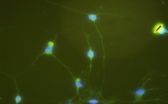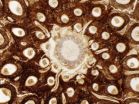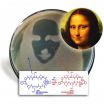(Press-News.org) DURHAM, N.C. -- Although markets for trading carbon emission credits to reduce greenhouse gas emissions have stalled in United States federal policy-making, carbon markets are emerging at the state level within the U.S. and around the world, teaching us more about what does and doesn't work.
In a Policy Forum article in the March 21 edition of Science magazine, Duke University's Richard Newell, William Pizer and Daniel Raimi discuss the key lessons from a decade of experience with carbon markets. They also discuss what it might take for these markets to develop and possibly link together in the coming years and decades.
These carbon markets are a key part of an emerging global policy framework that includes trading programs and other policies such as renewable energy incentives, carbon taxes, and traditional regulation. They have encouraged modest reductions in greenhouse gas emissions so far and expanded to cover a substantial and growing share of global emissions.
The Duke authors note that the emergence of a global system, built from the bottom up, faces a number of challenges including differences in program structure and the concern that business and industry may be driven away from a region or nation where programs are more stringent. While economic arguments tend to favor the linking of markets, other issues such as the challenge of comparing one program to the next, national and regional political concerns, and the financial flows resulting from international carbon trade will create challenges for the bottom-up linking of programs.
"The challenges are indeed real, but each time these markets have faced a challenge, they've learned something important," said Newell, director of the Duke University Energy Initiative and the Gendell Professor of Energy and Environmental Economics at the Nicholas School of the Environment.
"With these markets springing up, we have lessons from the past that can be applied to new markets such as the one in California, the one in Quebec, or the ones developing in China," Newell said. "As a result, they will hopefully avoid some of the problems that others have dealt with in the past."
The European Union's Emission Trading System (EU-ETS) has seen significant challenges recently, with prices falling to historic lows in 2013. Australia's carbon market is slated to be repealed this summer, after the new governing party makes good on its election promise to abolish it.
Still, such issues haven't stopped the development of new programs. China recently saw the establishment of five regional pilot carbon markets, nearly doubling the volume of emissions covered by existing trading programs. Kazakhstan also has a pilot program in place, and South Korea plans a new market. After successful launches in 2013, California and Quebec have recently linked their markets.
The authors review how these programs are addressing concerns such as uncertainty over carbon market prices and how to approach differences in policy and structure across programs.
"We are learning from the problems and successes of the past," said co-author William Pizer, an Associate Professor of Public Policy, Economics and Environment at Duke's Sanford School of Public Policy and a faculty fellow at the Nicholas Institute for Environmental Policy Solutions. "As governments revise existing market rules or new markets arrive, the system evolves. It's all being tried and updated in real time."
INFORMATION:
The Policy Forum's third author, Daniel Raimi, is an associate in research at the Duke Energy Initiative.
Science Magazine is published by the American Association for the Advancement of Science. The Duke authors' article may be found here.
Lessons offered by emerging carbon trading markets
New models being tested to reduce greenhouse gas emissions
2014-03-21
ELSE PRESS RELEASES FROM THIS DATE:
Who reprograms rat astrocytes into neurons?
2014-03-21
To date, it remains poorly understood whether astrocytes can be easily reprogrammed into neurons. Mash1 and Brn2 have been previously shown to cooperate to reprogram fibroblasts into neurons. Dr. Yongjun Wang and team from Shanghai University of Traditional Chinese Medicine in China found that and found that Brn2 was expressed in astrocytes from 2-month-old Sprague-Dawley rats, but Mash1 was not detectable. Thus, the researchers hypothesized that Mash1 alone could be used to reprogram astrocytes into neurons. Murine stem cell virus (MSCV)-Mash1 recombinant plasmid was constructed ...
Unique chromosomes preserved in Swedish fossil
2014-03-21
Researchers from Lund University and the Swedish Museum of Natural History have made a unique discovery in a well-preserved fern that lived 180 million years ago. Both undestroyed cell nuclei and individual chromosomes have been found in the plant fossil, thanks to its sudden burial in a volcanic eruption.
The well-preserved fossil of a fern from the southern Swedish county of Skåne is now attracting attention in the research community. The plant lived around 180 million years ago, during the Jurassic period, when Skåne was a tropical region where the fauna was dominated ...
A study using Drosophila flies reveals new regulatory mechanisms of cell migration
2014-03-21
Cell migration is highly coordinated and occurs in processes such as embryonic development, wound healing, the formation of new blood vessels, and tumour cell invasion. For the successful control of cell movement, this process has to be determined and maintained with great precision. In this study, the scientists used tracheal cells of the fruit fly Drosophila melanogaster to unravel the signalling mechanism involved in the regulation of cell movements.
The research describes a new molecular component that controls the expression of a molecule named Fibroblast Growth ...
Switching an antibiotic on and off with light
2014-03-21
This news release is available in German. Scientists of the KIT and the University of Kiev have produced an antibiotic, whose biological activity can be controlled with light. Thanks to the robust diarylethene photoswitch, the antimicrobial effect of the peptide mimetic can be applied in a spatially and temporally specific manner. This might open up new options for the treatment of local infections, as side effects are reduced. The researchers present their photoactivable antibiotic with the new photomodule in a "Very Important Paper" of the journal "Angewandte Chemie". ...
cfaed presents the new microchip 'Tomahawk 2' at the DATE'14 in Dresden
2014-03-21
The Center for Advancing Electronics Dresden (cfaed) presents its new microchip 'Tomahawk 2' at the DATE'14 Conference in the International Congress Center Dresden from March 24 to 28, 2014. The new Tomahawk is extremely fast, energy-efficient and resilient. It is a heterogeneous multi-processor which can easily integrate very different kinds of devices. The researchers of the Cluster of Excellence for microelectronics of Technische Universität Dresden use the new prototype to prepare the so-called 'tactile internet'. With this, very big data volumes shall be transmitted ...
New study shows we work harder when we are happy
2014-03-21
Happiness makes people more productive at work, according to the latest research from the University of Warwick.
Economists carried out a number of experiments to test the idea that happy employees work harder. In the laboratory, they found happiness made people around 12% more productive.
Professor Andrew Oswald, Dr Eugenio Proto and Dr Daniel Sgroi from the Department of Economics at the University of Warwick led the research.
This is the first causal evidence using randomized trials and piece-rate working. The study, to be published in the Journal of Labor Economics, ...
Surprising new way to kill cancer cells
2014-03-21
Northwestern Medicine scientists have demonstrated that cancer cells – and not normal cells – can be killed by eliminating either the FAS receptor, also known as CD95, or its binding component, CD95 ligand.
"The discovery seems counterintuitive because CD95 has previously been defined as a tumor suppressor," said lead investigator Marcus Peter, professor in medicine-hematology/Oncology at Northwestern University Feinberg School of Medicine. "But when we removed it from cancer cells, rather than proliferate, they died."
The findings were published March 20 in Cell Reports. ...
Stem cell study finds source of earliest blood cells during development
2014-03-21
Irvine, Calif., March 20, 2014 — Hematopoietic stem cells are now routinely used to treat patients with cancers and other disorders of the blood and immune systems, but researchers knew little about the progenitor cells that give rise to them during embryonic development.
In a study published April 8 in Stem Cell Reports, Matthew Inlay of the Sue & Bill Gross Stem Cell Research Center and Stanford University colleagues created novel cell assays that identified the earliest arising HSC precursors based on their ability to generate all major blood cell types (red blood ...
New infrared technique aims to remotely detect dangerous materials
2014-03-21
For most people, infrared technology calls to mind soldiers with night-vision goggles or energy audits that identify where heat escapes from homes during the winter season.
But for two Brigham Young University professors, infrared holds the potential to spot from afar whether a site is being used to make nuclear weapons.
Statistics professor Candace Berrett developed a model that precisely characterizes the material in each pixel of an image taken from a long-wave infrared camera. The U.S. National Nuclear Security Administration funded the project through a grant ...
The gene family linked to brain evolution is implicated in severity of autism symptoms
2014-03-21
The same gene family that may have helped the human brain become larger and more complex than in any other animal also is linked to the severity of autism, according to new research from the University of Colorado Anschutz Medical Campus.
The gene family is made up of over 270 copies of a segment of DNA called DUF1220. DUF1220 codes for a protein domain – a specific functionally important segment within a protein. The more copies of a specific DUF1220 subtype a person with autism has, the more severe the symptoms, according to a paper published in the PLoS Genetics. ...
LAST 30 PRESS RELEASES:
Tracing the quick synthesis of an industrially important catalyst
New software sheds light on cancer’s hidden genetic networks
UT Health San Antonio awarded $3 million in CPRIT grants to bolster cancer research and prevention efforts in South Texas
Third symposium spotlights global challenge of new contaminants in China’s fight against pollution
From straw to soil harmony: International team reveals how biochar supercharges carbon-smart farming
Myeloma: How AI is redrawing the map of cancer care
Manhattan E. Charurat, Ph.D., MHS invested as the Homer and Martha Gudelsky Distinguished Professor in Medicine at the University of Maryland School of Medicine
Insilico Medicine’s Pharma.AI Q4 Winter Launch Recap: Revolutionizing drug discovery with cutting-edge AI innovations, accelerating the path to pharmaceutical superintelligence
Nanoplastics have diet-dependent impacts on digestive system health
Brain neuron death occurs throughout life and increases with age, a natural human protein drug may halt neuron death in Alzheimer’s disease
SPIE and CLP announce the recipients of the 2025 Advanced Photonics Young Innovator Award
Lessons from the Caldor Fire’s Christmas Valley ‘Miracle’
Ant societies rose by trading individual protection for collective power
Research reveals how ancient viral DNA shapes early embryonic development
A molecular gatekeeper that controls protein synthesis
New ‘cloaking device’ concept to shield sensitive tech from magnetic fields
Researchers show impact of mountain building and climate change on alpine biodiversity
Study models the transition from Neanderthals to modern humans in Europe
University of Phoenix College of Doctoral Studies releases white paper on AI-driven skilling to reduce burnout and restore worker autonomy
AIs fail at the game of visual “telephone”
The levers for a sustainable food system
Potential changes in US homelessness by ending federal support for housing first programs
Vulnerability of large language models to prompt injection when providing medical advice
Researchers develop new system for high-energy-density, long-life, multi-electron transfer bromine-based flow batteries
Ending federal support for housing first programs could increase U.S. homelessness by 5% in one year, new JAMA study finds
New research uncovers molecular ‘safety switch’ shielding cancers from immune attack
Bacteria resisting viral infection can still sink carbon to ocean floor
Younger biological age may increase depression risk in older women during COVID-19
Bharat Innovates 2026 National Basecamp Showcases India’s Most Promising Deep-Tech Ventures
Here’s what determines whether your income level rises or falls
[Press-News.org] Lessons offered by emerging carbon trading marketsNew models being tested to reduce greenhouse gas emissions



